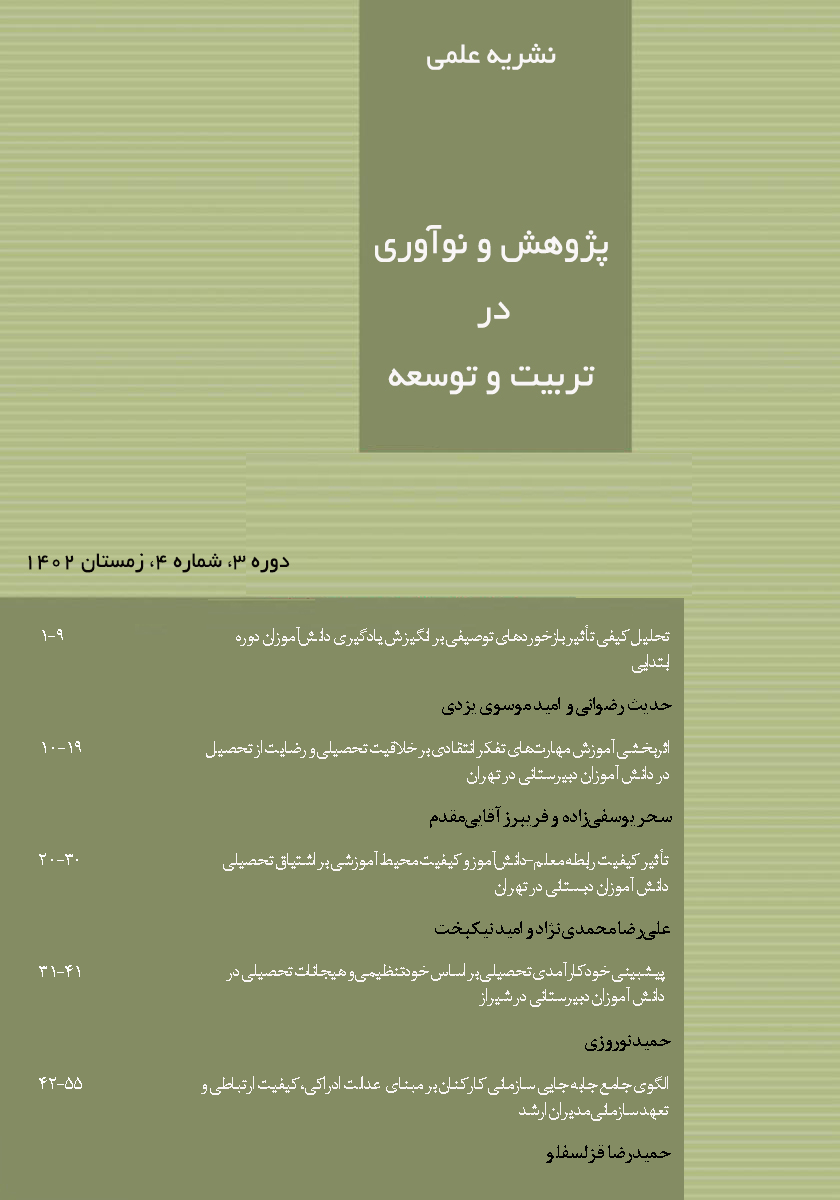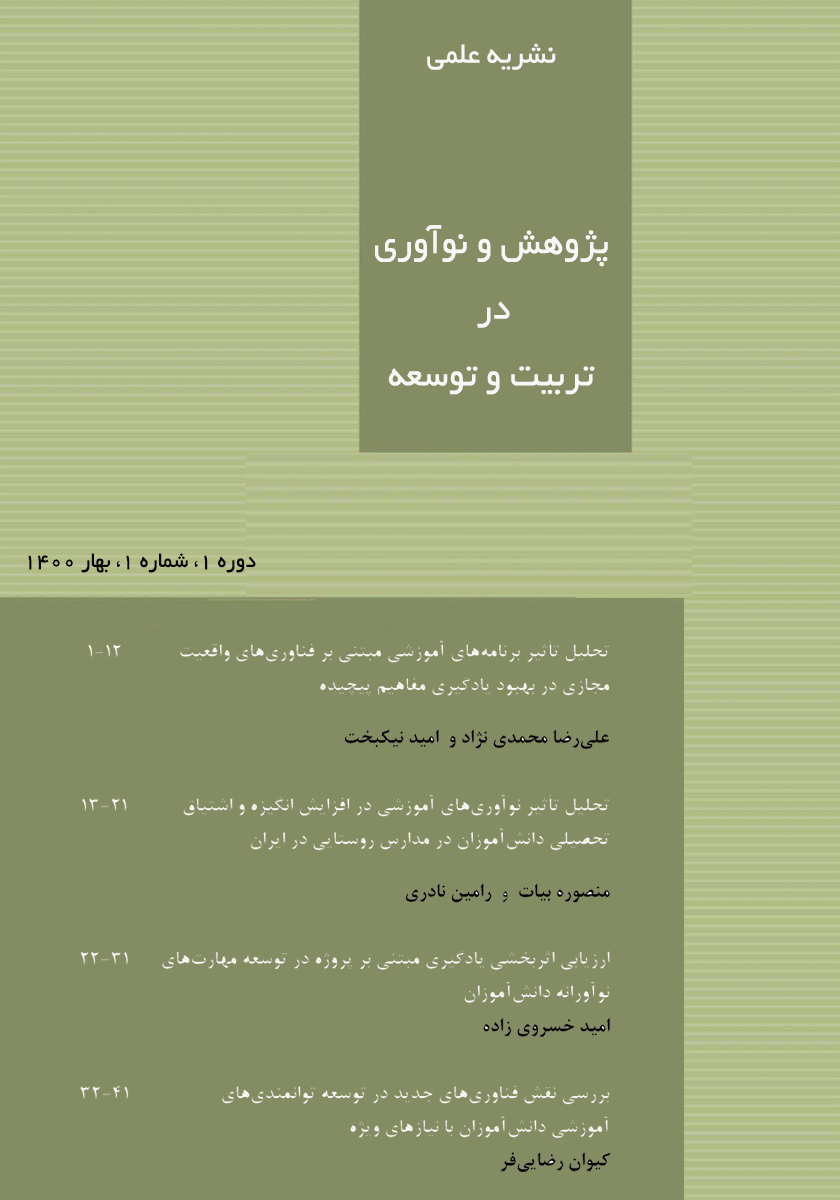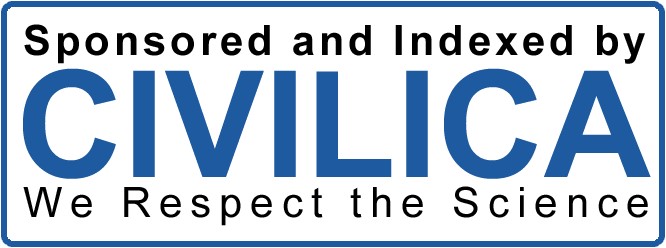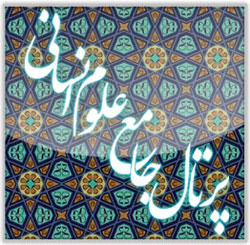Identification of Strengths in Sports Talent Identification in the Iranian Education System
Keywords:
Sports talent identification, sustainable development of sports, educationAbstract
Iran, as a country with a young population and significant sporting potential, requires an efficient and scientific system for identifying and nurturing sports talents. Addressing this issue provides an opportunity to identify strengths, resolve challenges, and develop strategies that could lead to a fundamental transformation in the sports talent identification process. The purpose of this study was to identify the strengths of sports talent identification in the education system of Iran. The research was applied in purpose, and field-based in data collection, utilizing a mixed-methods approach (quantitative and qualitative). The qualitative sample consisted of experts in the field of sports talent identification within the education system, while the quantitative sample comprised over ten thousand physical education teachers across the country. The sample size for the qualitative section was 15 individuals, and in the quantitative section, 384 physical education teachers were selected using the Morgan sampling table, through a convenience sampling method. Data analysis was conducted using the Friedman ranking statistical method, employing SPSS26 software. The results showed that the strengths in the management of sports talent identification within the education system were identified as 23 factors. Among these, early identification of talents, use of various evaluation techniques, collaboration with parents, and attention to holistic development were ranked first to fourth, while continuous assessment was ranked last. The findings indicated that sports talent management within Iran's education system possesses several strengths, the identification and utilization of which could significantly improve the process of talent identification and development. Based on these findings, it is necessary for Iran’s education system to adopt a comprehensive and scientific approach to strengthen and leverage these strengths, with a focus on addressing challenges. This could be a crucial step towards the sustainable development of sports in the country.
Downloads
References
Altınöz, M., Çakıroğlu, D., & Çöp, S. (2013). Effects of talent management on organizational trust: a field study. ProcediaSocial and Behavioral Sciences, 99, 843-851. https://doi.org/10.1016/j.sbspro.2013.10.556
Baker, J., Wattie, N., & Schorer, J. (2019). A proposed conceptualization of talent in sport: The first step in a long and winding
road. Psychology of Sport and Exercise, 43, 27-33. https://doi.org/10.1016/j.psychsport.2018.12.016
Bolander, P., Werr, A., & Asplund, K. (2017). The practice of talent management: a framework and typology. Personnel
Review, 46(8), 1523-1551. https://doi.org/10.1108/PR-02-2016-0037
Buekers, M., Borry, P., & Rowe, P. (2015). Talent in sports. Some reflections about the search for future champions. Movement
& Sport Sciences-Science & Motricité, 88, 3-12. https://doi.org/10.1051/sm/2014002
Dries, N. (2013). The psychology of talent management: A review and research agenda. Human Resource Management Review,
(4), 272-285. https://doi.org/10.1016/j.hrmr.2013.05.001
Henriksen, K., Stambulova, N., & Roessler, K. K. (2010). Successful talent development in track and field: considering the
role of environment. Scandinavian Journal of Medicine & Science in Sports, 20, 122-132. https://doi.org/10.1111/j.1600-
2010.01187.x
Howe, M. J., Davidson, J. W., & Sloboda, J. A. (1998). Innate talents: Reality or myth? Behavioral and brain sciences, 21(3),
-407. https://doi.org/10.1017/S0140525X9800123X
Ingram, T., & Glod, W. (2016). Talent management in healthcare organizations-qualitative research results. Procedia
Economics and Finance, 39, 339-346. https://doi.org/10.1016/S2212-5671(16)30333-1
Issurin, V. B. (2017). Evidence-based prerequisites and precursors of athletic talent: a review. Sports medicine, 47(10), 1993-
https://doi.org/10.1007/s40279-017-0740-0
Larkin, P., & Reeves, M. J. (2018). Junior-elite football: time to re-position talent identification? Soccer & Society, 19(8), 1183-
https://doi.org/10.1080/14660970.2018.1432389
Lewis, R. E., & Heckman, R. J. (2006). Talent management: A critical review. Human Resource Management Review, 16, 139-
https://doi.org/10.1016/j.hrmr.2006.03.001
Mortezaeian, M., Mirzazadeh, Z. S., Keshtidar, M., & Talebpour, M. (2023). Present a model of sports talent management of
Iranian students based on grounded theory. Journal of Strategic Sociological Studies in Sport, 2(4), 389-400.
Mozaffari, H., Shayegan, F., & Mohebi, A. (2023). Designing an Intelligence and Talent Management Pattern for Elementary
School Students. Iranian Journal of Educational Society, 9(1), 349-358.
Naseri Palangard, V., Bahrami, S., Zardashtian, S., & Yousefi, B. (2020). Designing a Family-School Support Model for
Developing Sports Talents: A Grounded Theory Study. Health Promotion Management Quarterly, 10(1), 74-90.
Nazari, R., & Tabesh, S. (2019). Challenges of Sports Development in Iran with an Approach to Talent Identification and
Greenhouse Elite Development. Sport Management and Development, 8(1), 1-14.
Nazarian, M. R., Mahdad, A., Abedi, A., & Nadi, M. A. (2022). Identifying Methods and Components of Teaching and
Developing Its Interpretive Model Based on Teachers' Lived Experiences in Discovering Elementary Students' Science
Talents. Research in Curriculum Planning, 19(72), 35-48.
Norouzi Seyed Hosseini, R. (2020). Understanding the Lived Experience of Sports Public Relations Managers Regarding
Media Crises (A Phenomenological Approach). Scientific Quarterly of Communication Management in Sports Media,
(2), 13-26.
Vaeyens, R., Lenoir, M., Williams, A. M., & Philippaerts, R. M. (2008). Talent identification and development programmes in
sport : current models and future directions. Sports medicine (Auckland, N.Z.), 38(9), 703-714.
Downloads
Published
Submitted
Revised
Accepted
Issue
Section
License
Copyright (c) 2024 Journal of Study and Innovation in Education and Development

This work is licensed under a Creative Commons Attribution-NonCommercial 4.0 International License.











